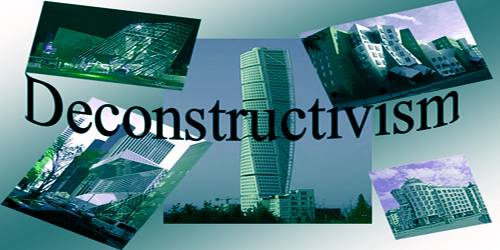Deconstructivism is a post-modern architectural style characterized by the concept of fragmentation and the surface manipulation of structures. Its philosophical and literary analysis forms were originally started in the 1960s by the French philosopher Jack Derrida, who questioned the philosophical and literary language and anagogic texts by closely examining the fundamental conceptual differences or “opposites” in Western philosophy. Another aspect of the art that is still under development, Deconstructivism is a strange but intense creative style of twentieth-century architecture that originated in Los Angeles California, but in Europe in the late 1980s. It gives an idea of the fragmentation of the built building. It is characterized by the absence of harmony, continuity, or symmetry. It originally sought to erode preconceived beliefs surrounding logic and logic (respected by earlier philosophers such as Kant and Enlightenment). Instead, Derrida argued that words, from symbols (in fact, remember symbols are the latter that the Deconstructivism architecture established), or whatever, because of relationships, exist in things, Yin and Yang. Some intellectuals believe that the Deconstructionist philosophy is also opposed to post-modern art, although its practical consequences are unclear. After all, a deconstructivism architect must obey the modernist and post-modernist laws of science, no matter what he likes. The work of architects is often described as a deconstruction (though in many cases the architects themselves reject the label) Peter Eisenman, Frank Gerry, Zaha Hadid, Rim Kulchas, Daniel Libeskind, Bernard Soumi, and Cope Himmelb (I)au.
The 1982 Park de la Vilat Architectural Design Contest, most notably the entry of Jack Derrida and Peter Eisenman, and the winning entry of Bernard Shashumi, as well as deconstructivism at the Museum of Modern Art’s 1988 Deconstructionist Architecture, came to public attention by Philip Ayerke and Mark Wigley Philip Johnson. The exhibition was designed by Frank Geary, Daniel Liebkind, Peter Eisenman, Zaha Hadid, Rem Koolhaas, Bernard Souchumi and Coupe Himmelb (I) Au. The Wexner Center for the Arts opened in Columbus the following year, the first large public building designed in the style of Peter Eisenman Dijonstructivist. Since their exhibition, some architects associated with deconstructivism, however, have stuck to the term and adopted a general tendency within contemporary architecture. Since the rise of Deconstructivism, some of the architects associated with it have removed or alienated themselves from it, but the term has stuck, and its iconoclastic design philosophy has surrounded contemporary American architecture as well as a European design. Although both the postmodernist and the nascent deconstructivist architect were published in the journal Oppes (published between 1973 and 1984), the contents of that journal have been decided by one of two movements. Although some experts see an association with constructivism, the movement started in Russia with the likes of Vladimir Tatlin (1885-1953), Lubov Popova (1889-1924) and El Lisitzky (1890-1941), while others deny any such connection. Still, others claim that the Deconstructionist movement has come to some extent from ideas advanced by the post-structuralist philosopher Jack Derrida. In addition to the opposition, defining texts for both deconstructivism and post-modernism was Robert Venturi’s Conflict between Complexity and Architecture (1966). It argues against the sanctity, precision, and simplicity of modernity.
The idea is that the form or shape of a building or architecture being created should be based primarily on its intended function. In addition to fragmentation, deconstructivism often manipulates the surface skin of the structure and is created by non-rewritable shapes that appear to distort and displace architectural elements. But this is nothing more than a postmodern modern “impulses” rather than a consistent movement or a consistent design style.
















